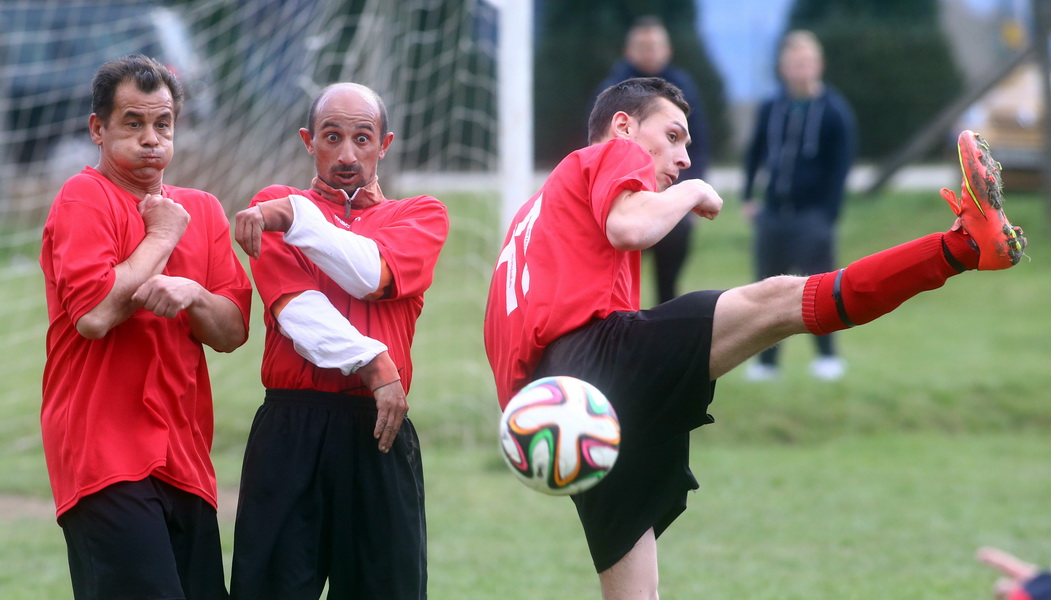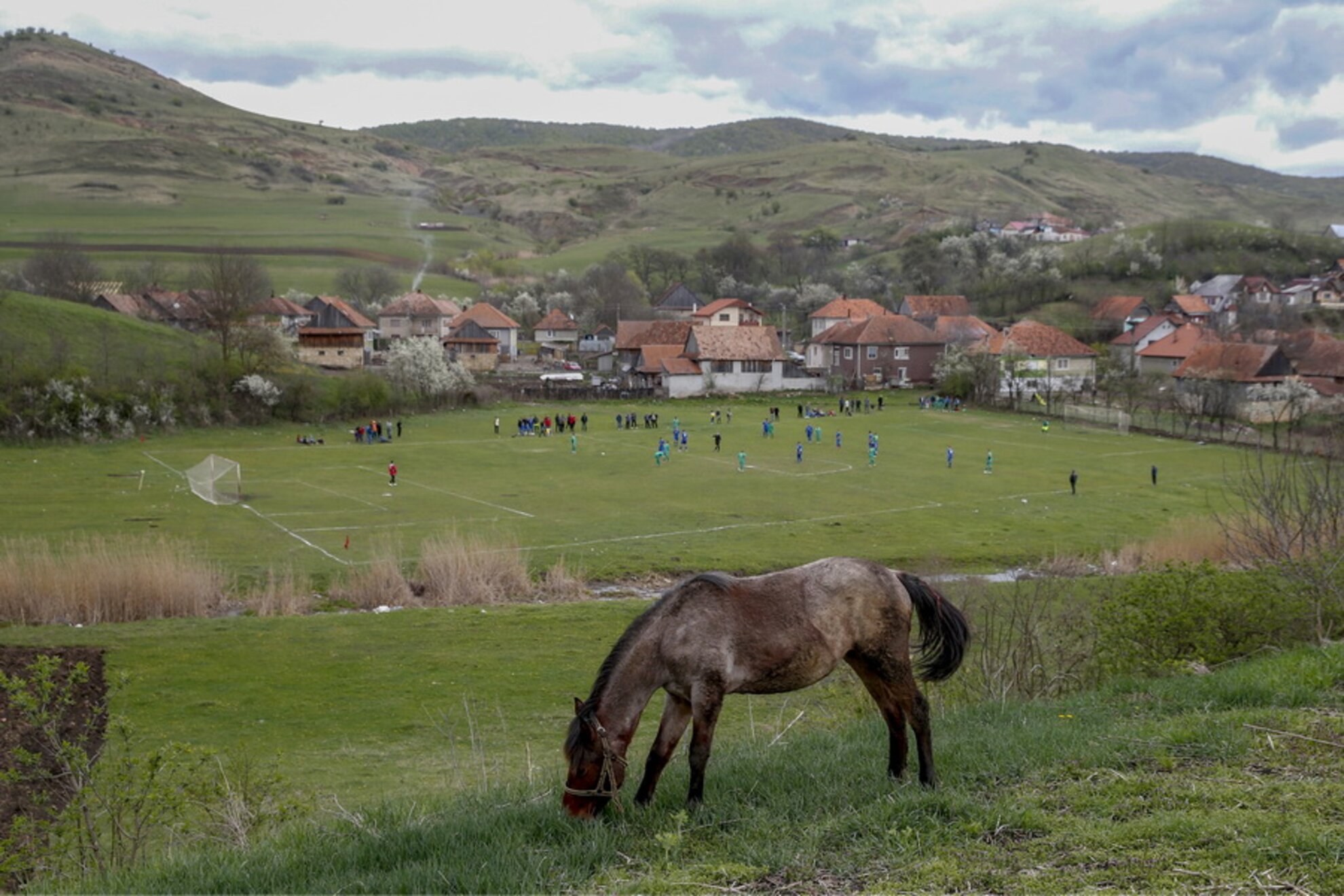
Horses graze by hidden
pitches, pleading trainers outline their half-time spiel to chain-smoking
Gypsies in cheap training shoes, a substitute fishes the ball out of a stream
with the pole provided for that very purpose.
This is the realm and rural reality
of Hungarian village football, a world that award-winning sports reporter Péter
Csillag and ten top photographers experienced first-hand.
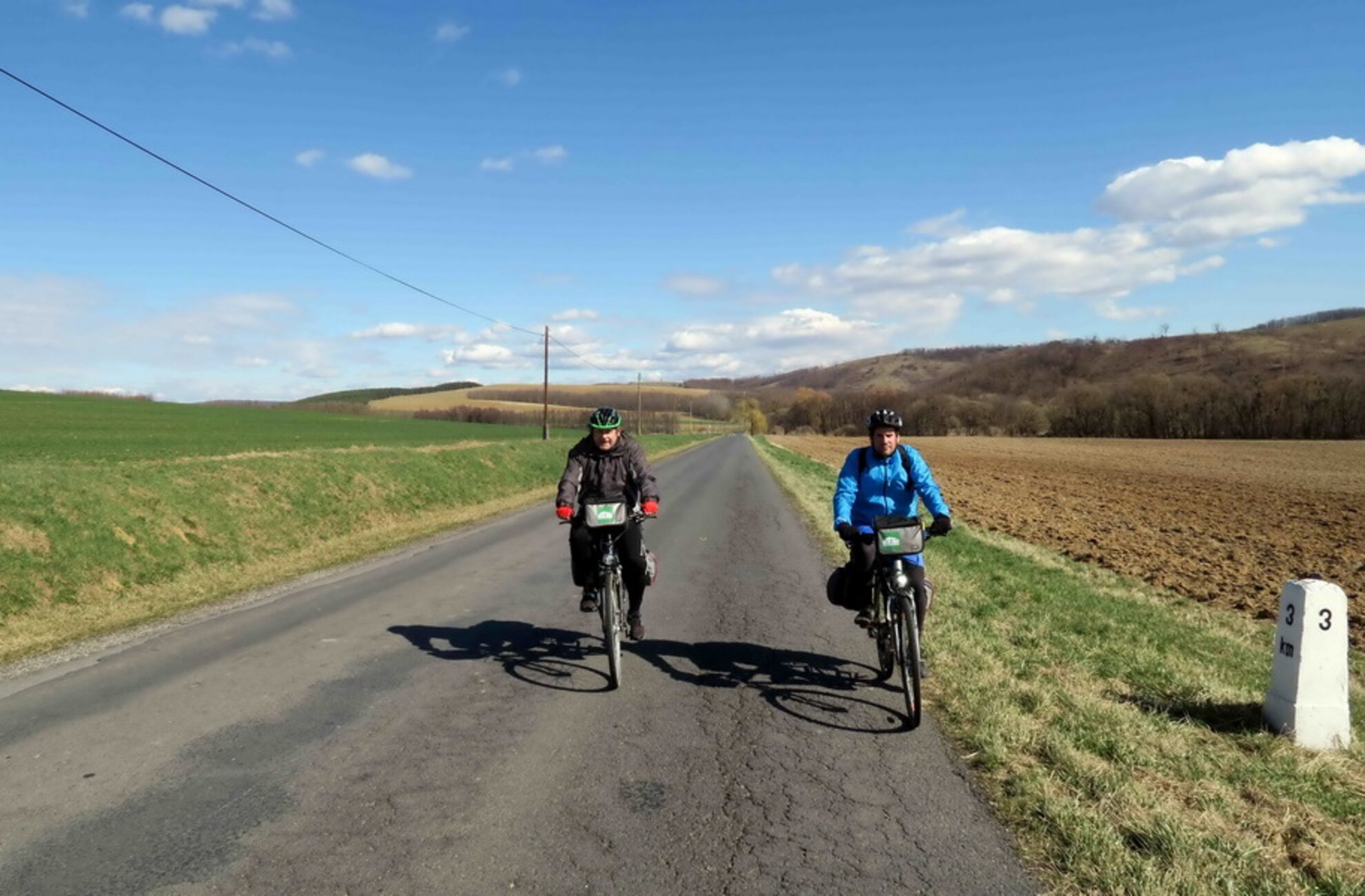
From Alsószölnök to Újdombrád, this pioneering first XI took to their bikes and cars to see what happens when unknown teams from Hungary’s lower leagues meet each other.
The end result, Hátsó füves (‘Backyard Goals’), with texts in English, is a window into a hidden Hungary few foreign residents, and certainly no tourists, ever see.
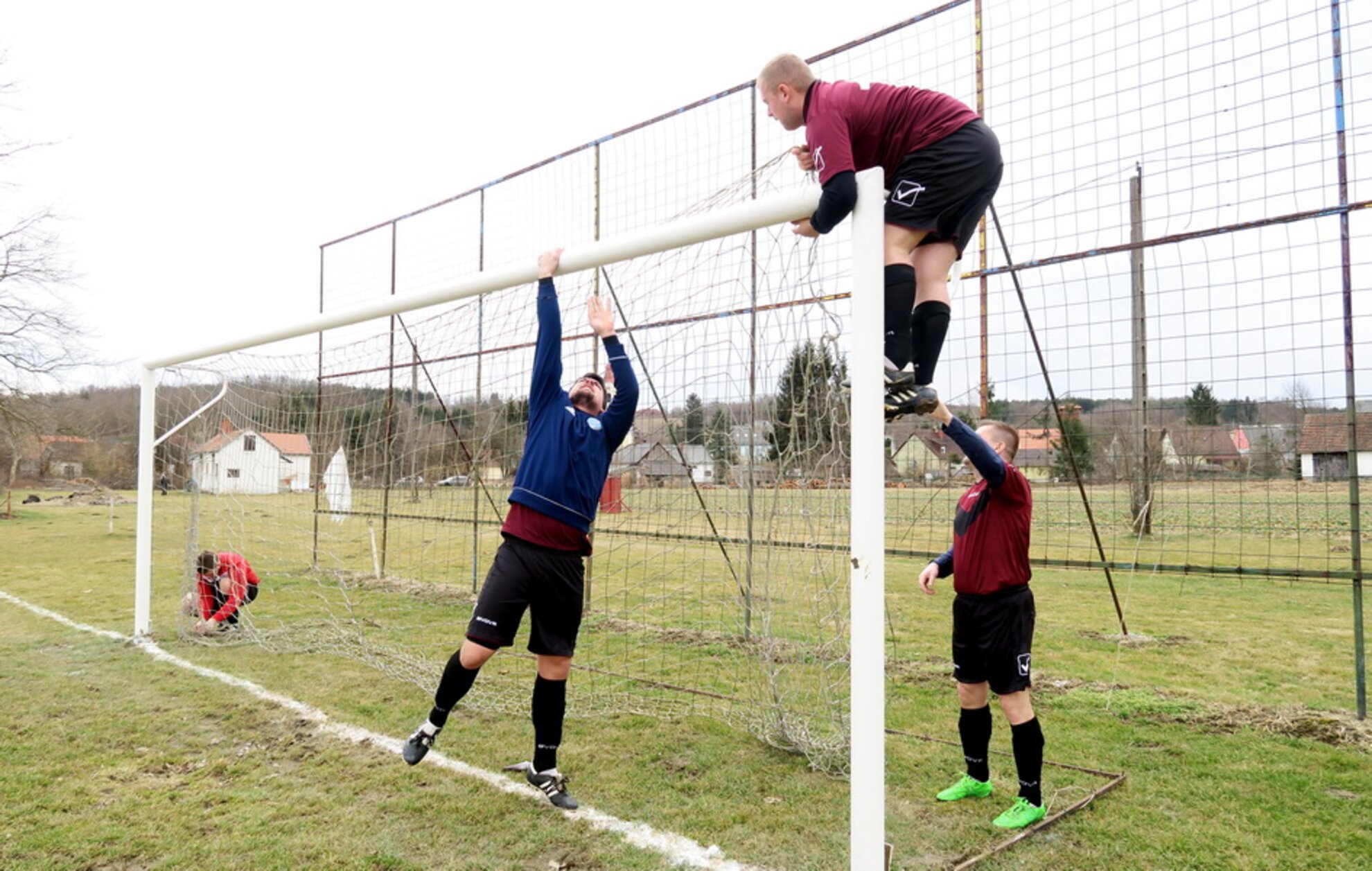
“We were trying to capture real village life,” explains author Péter Csillag, staff writer at Hungary’s revered daily Nemzeti Sport. “Football is the perfect way to engage with the local community.”
“Every village will have a church, a neighbourhood bar and a football pitch,” says István ‘Pista’ Mirkó, the award-winning photographer who accompanied Csillag on two wheels in 2017.
When Saturday comes
“Everyone will be there on a match day, the local priest, postman and grocer, players’ parents, wives and girlfriends, gathered around the touchline for 90 minutes.”
Timed around alternate fallow summers between 2015 and 2019, away from the biennial glare of a World Cup or European Championship, the team could focus attention on the dutiful game in their own backyard.
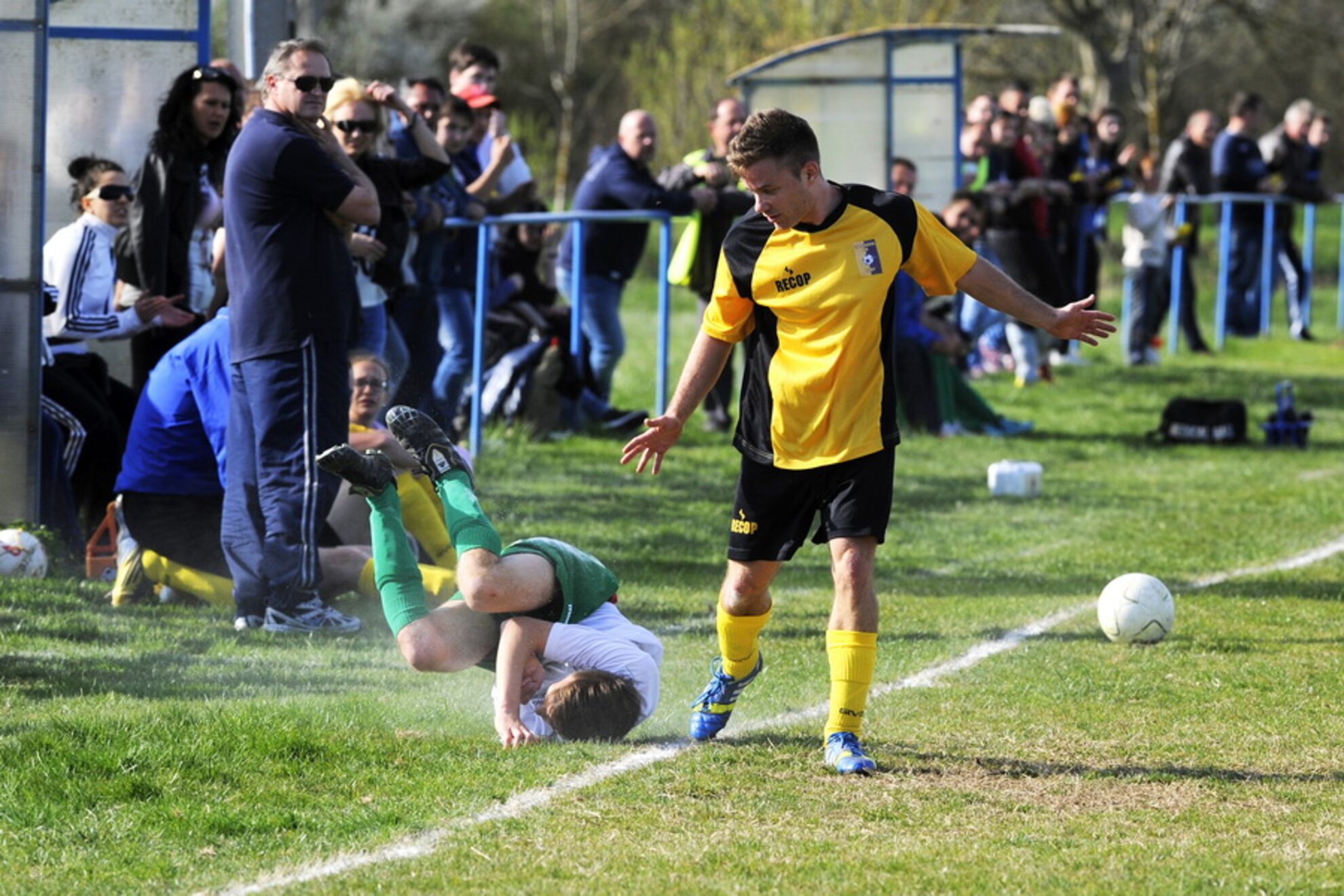
As well as a lavishly
illustrated, English-friendly, 200-page book,
the same painstakingly curated material has just been showcased as an online
exhibition by the Hungarian Olympic
and Sport Museum, forming part of the current Budapest Photo Festival.
Located
alongside the Puskás Aréna, the museum also aims to welcome visitors to
view the collection in person around the time the stadium co-hosts football’s
European Championships from mid-June.
For Mirkó, his distinguished career
a blur of action shots and tight deadlines, this was one commission where he
could take his time, the footballing equivalent of slow food:
Village people
“I would take in the surroundings, the church steeple, the row of hills, the woods, any salient local detail. We would spend several days on-site, getting to know the villagers and listening to their stories. Afterwards, there was often a big cauldron of post-match goulash. Everything was very communal.”
For Csillag, this was a project long in the hatching. Inspired by an exhibition by niche Dutch photographer Hans van der Meer that showed at the Ludwig, Budapest’s most prestigious gallery of contemporary art, and informed by his own personal library of football literature, he convinced his editor that Hátsó füves would not only be viable but vital.
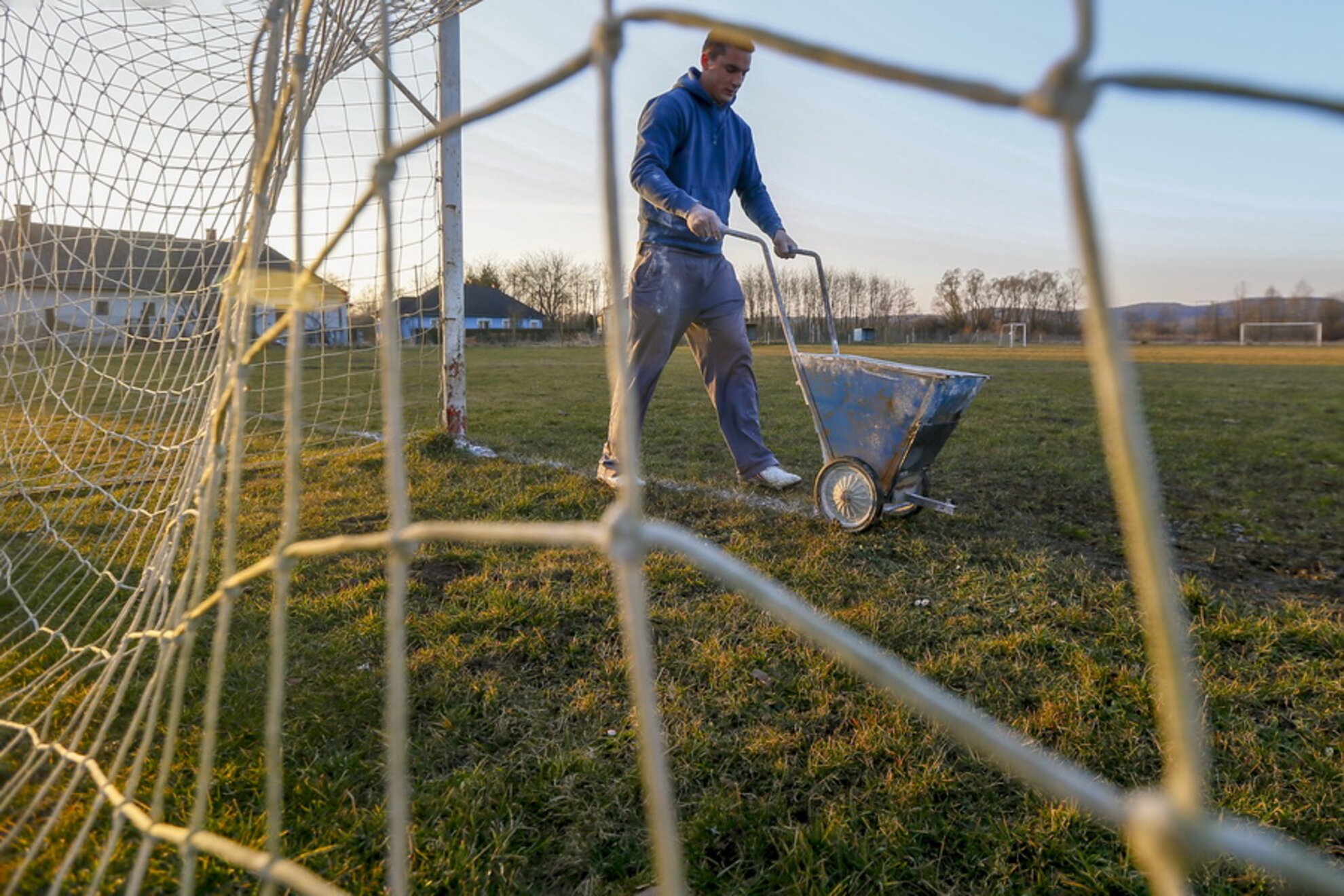
Football in the Hungarian countryside, vidék, usually warrants the most basic of information in the Monday editions, cursory results of matches between villages whose locations few in Budapest could find, let alone imagine. What if there were a story somewhere, a stirring saga, a tragic tale…
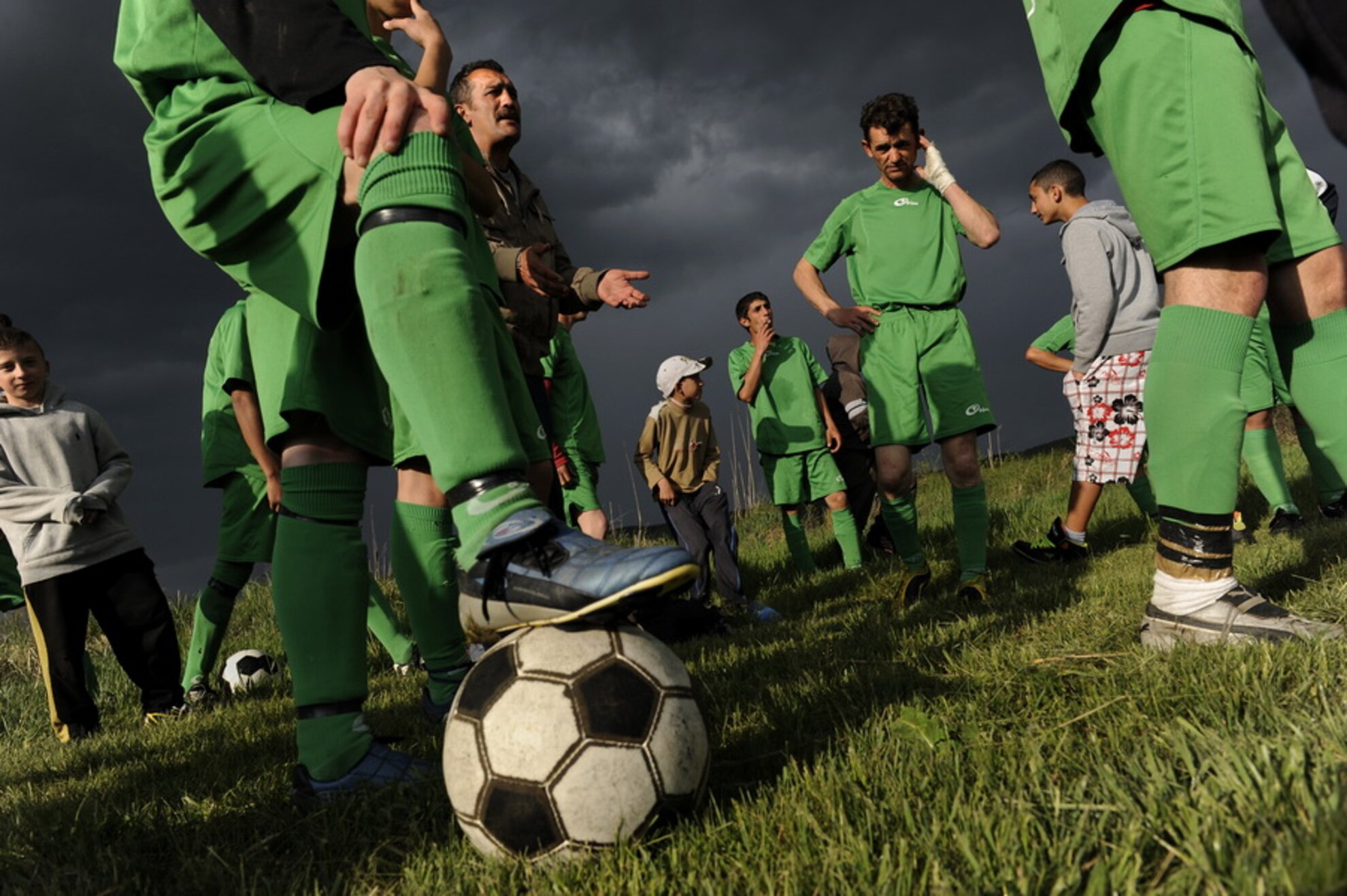
Vidék is a Hungarian concept whose English renditions, countryside, provinces, landscape, don’t begin to express. Travel an hour from London and you’ll find little but the same desperate litany of chain stores and bland eateries. Travel an hour from Budapest and you’re on another planet.
“Time and again, we encountered typical vidéki honesty and kindness,” reflects Mirkó, himself from Hajdúböszörmény, alongside Hajdúhadház in Hungary’s far east.
Jumpers for goalposts
“These were not everyday experiences. The fact that we were cycling the whole way for one of these tours meant that we had time to observe things and talk to people directly. But habits are changing. Hajdúhadház was the only place where we saw kids playing with makeshift goals in the yard as we used to when we were young. So many now spend all day staring at their mobiles.”
“I definitely felt a sense of
responsibility when it came to writing,” admits Csillag, whose articles ran in
long form every week in Nemzeti Sport.
“I knew that this would be the only
place that most locals would see their names in print, and their own quotes.
There was a duty not to misrepresent or mock them in any way. We had to show
the same respect to them as they had to us.”
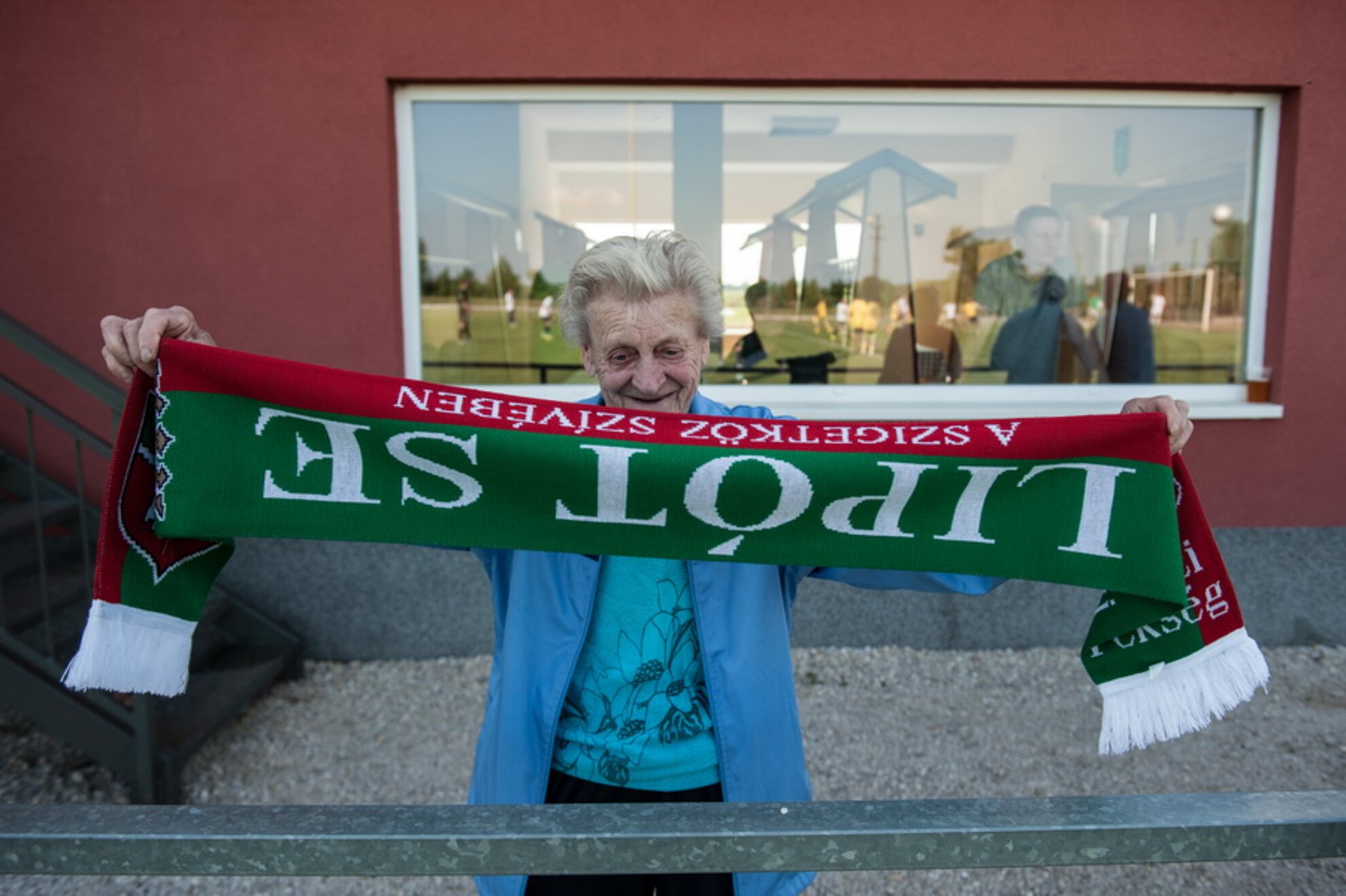
“One time, a young player had died and we found ourselves comforting the family, as any human being would. So many times we were invited into people’s homes. Wherever we went, we found all kinds of curiosities – Hungary’s last village cinema in Bölcske, or a famous old player who had saved his local team.”
Pitching up in Badacsony, home of exquisite Hungarian wine, they were delighted to see players chugging back the cheap lager after the game.
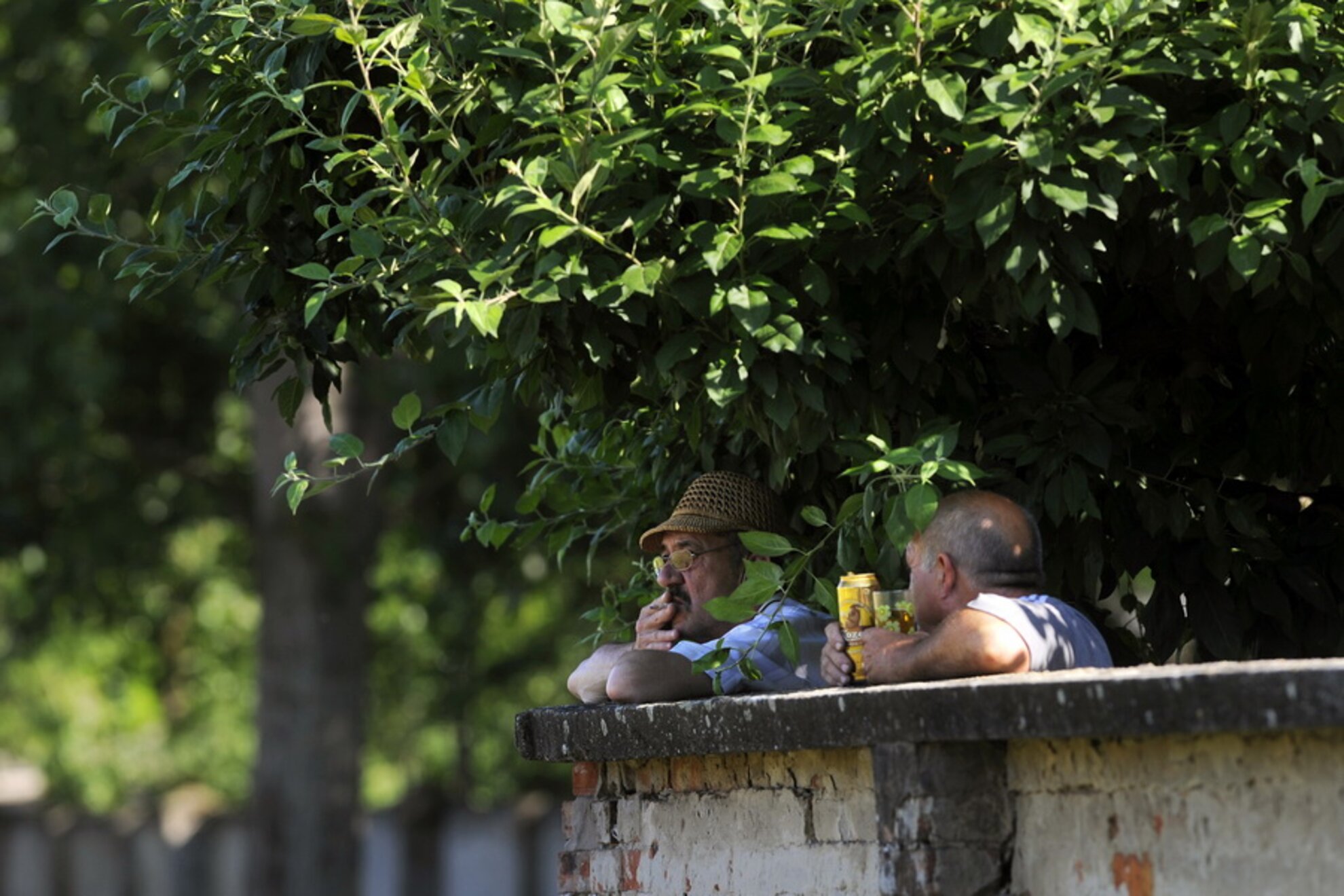
Cycling also allowed the pair
to kick around ideas, come up with the book title, discuss new destinations. An
initial itinerary was prioritised according to fascinating history, football
tradition or interesting location.
“I would do my research before choosing and setting off
for the next place,” says Csillag. “By the time the series got going, we were
getting requests from all over Hungary for us to feature them.”
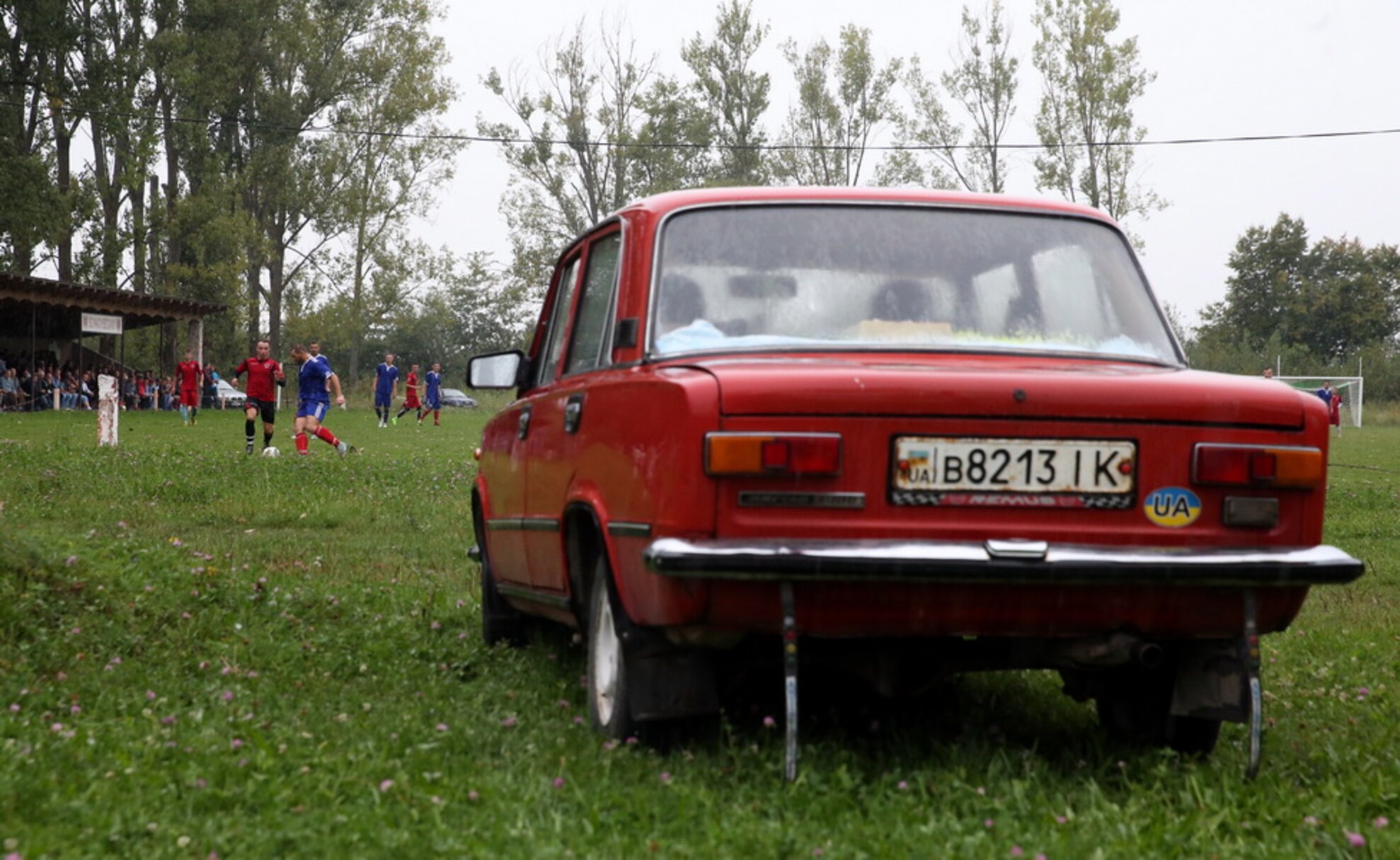
Hungarian communities beyond present-day borders were also explored. The pair have vivid memories of the remote villages in Transylvania they visited, and the torrential rain they both endured in Ukraine.
Many of the photographs and short descriptions come with an overheard snippet of touchline philosophy – “Son, your legs are so bandy, even a number 8 bus can get through them!” or “Boy, no-one from Kalotaszeg ever feels the cold!”
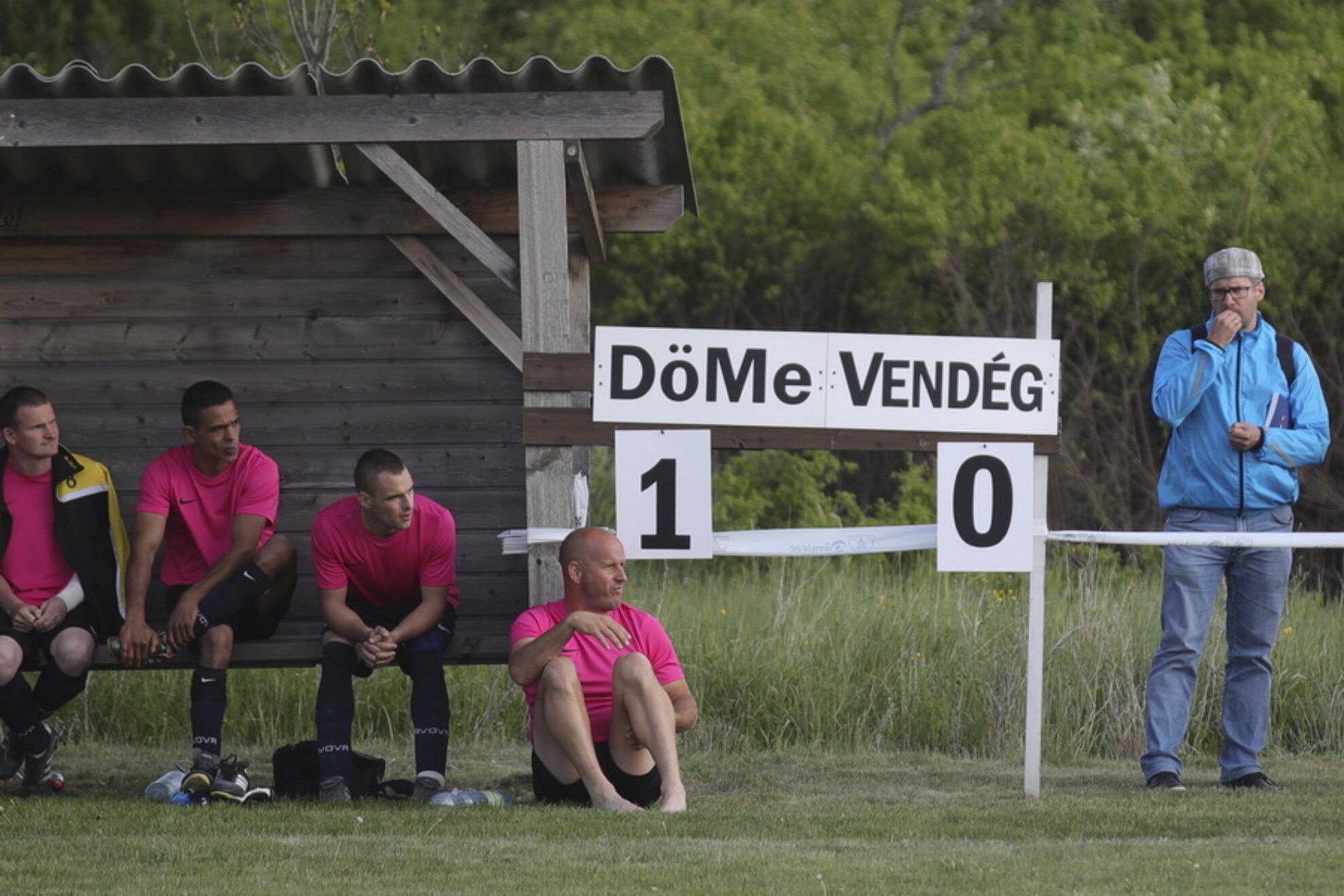
The resultant book, with 145 villages mapped out and more than half of them depicted, is a cornucopia of rural life in this timeless corner of the Carpathian Basin. It’s also a time capsule, “something to look back on in 20 years’ time,” as Csillag puts it.
Disappearing world
“When Hátsó füves came out, I phoned round all the village teams to let them know. Quite a few people had to apologise – they were very happy about the book but the team had since had to fold.”

Already aware of this sad
trend – those makeshift goals in Hajdúhadház had gone by the time he and
Mirkó returned the next time – Csillag gave Hátsó füves an alternate title
on the back cover: The Last Pictures of a Disappearing Football World.
A themed
exhibition in Sátoraljaújhely this summer, with installations recreating the
real-life elements of a village pitch, should keep its memory alive and
entertaining.

Hátsó füves (‘Backyard
Goals’)
Book published by Rézbong, available from Libri stores (4,990 HUF/€19.99)
Online exhibition by the Hungarian Olympic and Sport Museum (XIV. Ifjúság útja 2), personal visitors to be welcomed by mid-June. Exhibition also part of the Budapest Photo Festival until 25 June
